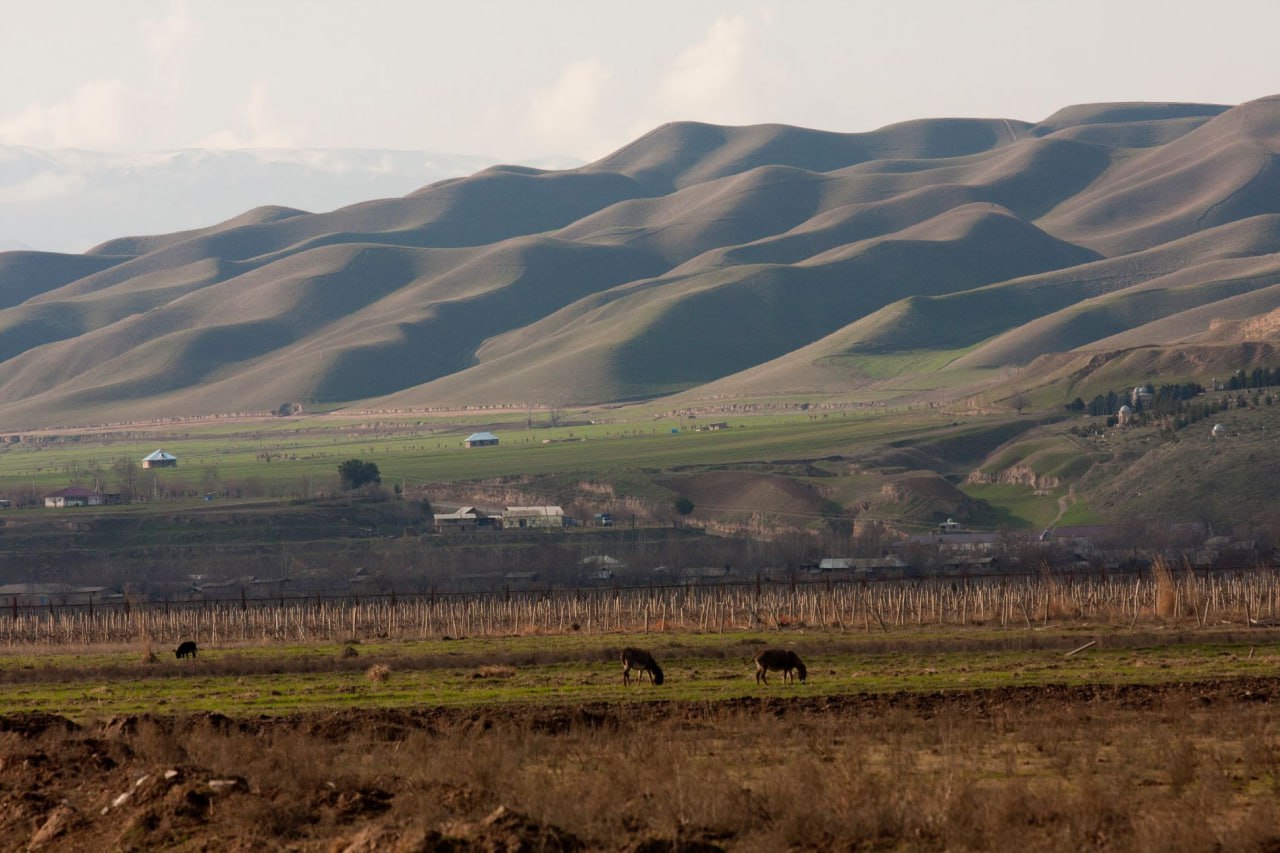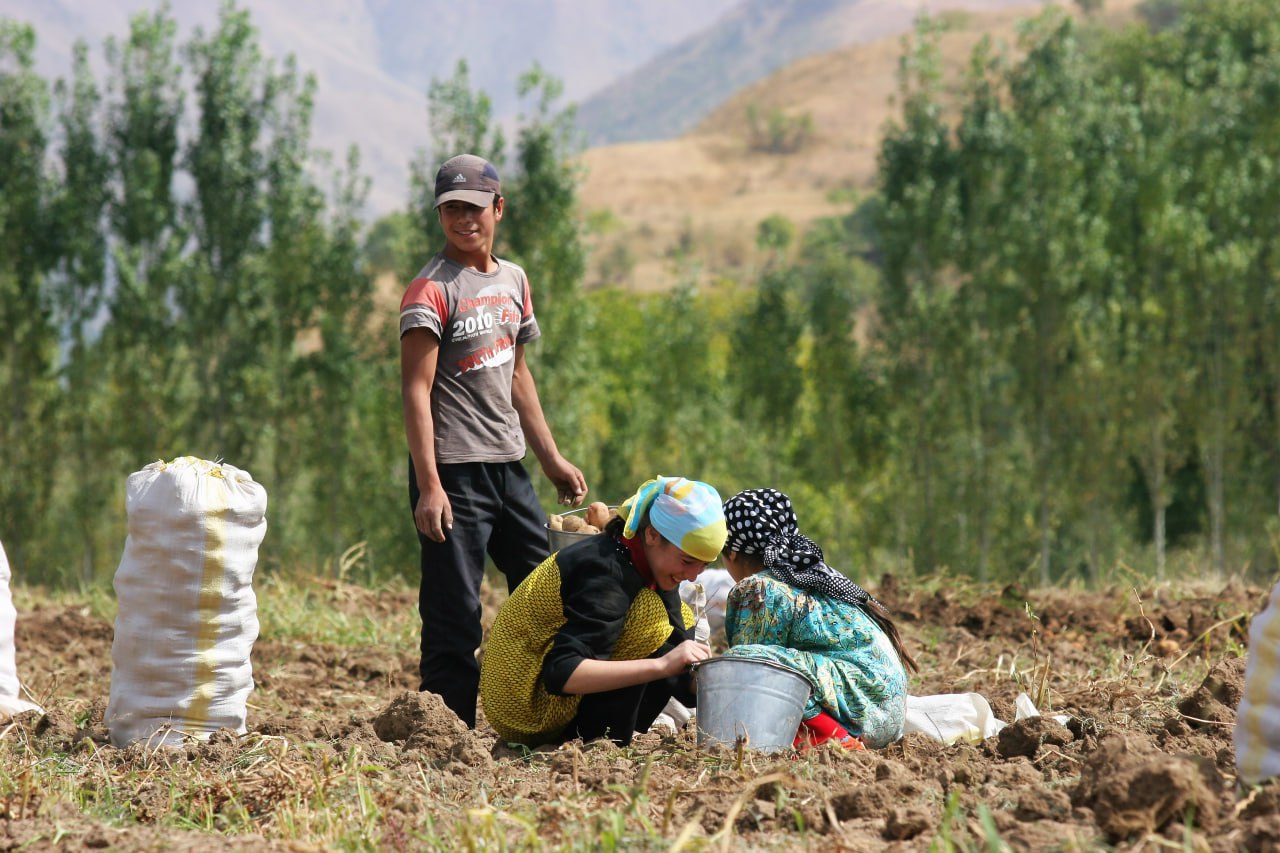Tajikistan is a country with a very high exposure to the risks of climate change. It can be traced in many areas of people's lives, ranging from health, nutrition, work and even recreation. In the period from 1992 to 2016, natural disasters affected more than 80% of the population of Tajikistan and led to economic losses of $1.8 billion. The consequences of climate change have a strong impact on agriculture, extreme weather events exacerbate the problems of villagers.
The cultivation of agricultural crops is becoming more difficult
Farmer Bahodur Khaitov says that this year, due to the abnormal winter cold, most of the grape trees died, and in summer the intense heat caused damage to the harvest of tomatoes, cucumbers and rice. "I used to get 7-8 tons of rice from 1 hectare of land, and the last two years the yield has decreased to 5 tons," the farmer says. According to Bahodur, such crops as tomatoes, cucumbers, potatoes, peppers, cabbage and others were the most vulnerable to climate change. "Traditionally, we have grown these crops during the summer and sold fresh harvest in early autumn. The population was usually engaged in harvesting vegetables at this time and they were very cheap in the markets. Starting in 2019, because of the heat, it is impossible to grow them in the summer," says the farmer.
Earlier in September, the market received late watermelons grown on the rain-fed lands of Tajikistan. They were not very large, but they were very tasty and sweet. For the third year now, it has not been possible to grow them. Mumin Safarov has been growing such watermelons for many years, this year his entire crop has dried up. "Because of the heat, the humidity has gone deep into the soil, the agricultural technique of growing rain-fed watermelons is simple, but, as you can see, there is no harvest," he laments.

Judging by the words of producers, Tajikistan does not have time to take measures to adapt agriculture to new conditions. During the day it is too dry and hot, and in August it is already cool in the fields, dew falls in the morning, which can be disastrous for cucumbers. As the sun comes out, dew burns leaves during evaporation, causes various diseases, attracts pests, as a result, the harvest will be small, and it does not cover the costs of producers.
Therefore, in recent years, dehkans have been growing them mainly under polyethylene and earlier, so that by August the harvest is already over.
According to Doctor of Agricultural Sciences Kurbonali Partoev, climate change can increase irrigation needs, accelerate land degradation, increase crop losses and cause damage due to harmful insects, pathogens, fungi and weeds. Extreme weather events and heat shocks caused by climate change can increase morbidity and mortality in animal husbandry.
Specialists of the agricultural industry noticed that plants in extreme heat and dry climate are exhausted and do not have time to swallow carbon dioxide, that is, the process of photosynthesis in plants has slowed down. According to them, the air becomes drier, which entails an increase in the evaporation of water from the leaves of plants. This is becoming one of the causes of global warming.
The temperature is rising…
President of Tajikistan Emomali Rahmon noted at the conference "Water for Sustainable Development 2018-2028": "Long-term observations indicate an increased impact of climate change on nature and the socio-economic situation in Tajikistan and Central Asia. According to these observations, over the past sixty years, the average annual air temperature in Tajikistan has increased by one degree Celsius, the frequency and intensity of natural hydrometeorological phenomena have increased."
According to the forecasts of experts of the Asian Development Bank (ADB), there is a high probability that the temperature in Tajikistan will increasingly exceed 40°C, especially in flat areas. This will increase the negative consequences for human health. It is predicted that the temperature rise in Tajikistan will be significantly higher than the global average. By 2090, warming may reach 5.5°C compared to 1986-2005.

What should we do?
According to ADB experts, without the necessary adaptation efforts, as well as reducing the risk of natural disasters, the effects of climate change, especially heat and drought, can lead to serious losses and damage in Tajikistan.
In agriculture, adaptation priorities should be aimed at diversifying livelihoods, developing efficient and climate-sustainable water and land use, among other things.
A critical adaptation solution for Tajikistan is tree planting or reforestation. "Trees, especially deciduous ones, produce oxygen and purify the air, regulate air temperature, improve health, nourish and stabilize the soil, retain water and control floods. Plus, the obvious benefits of food, fuel and beauty," said Shanny Campbell, ADB Country Director in Tajikistan.
ADB is going to tackle the problem
Climate change issues are becoming more acute day by day.
The Asian Development Bank, which is the Asia-Pacific Climate Bank, pays serious attention to this. ADB is working with governments and other partners to mobilize financing to combat climate change and introduce advanced knowledge.
ADB recently announced the creation of an Innovative Climate Finance Mechanism in the Asia-Pacific Region (ICFM-APR) – "a landmark program that can increase support for the region in the fight against climate change."
According to the ADB, a number of grants are currently being discussed for the development of projects to combat the effects of climate change and adapt to them. Using the "$1 at the entrance, $5 at the exit" model, initial plans to obtain guarantees for $3 billion can provide new financing for so-needed climate projects in the Asia-Pacific region in the amount of $15 billion.
ADB representatives note that the financing through the ICFM-APR will contribute to the achievement of the goals set by this institute to allocate 100 billion US dollars from its own resources to combat climate change by 2030, including 34 billion US dollars to finance adaptation to climate change, supporting the Asia-Pacific region in increasing sustainability.







